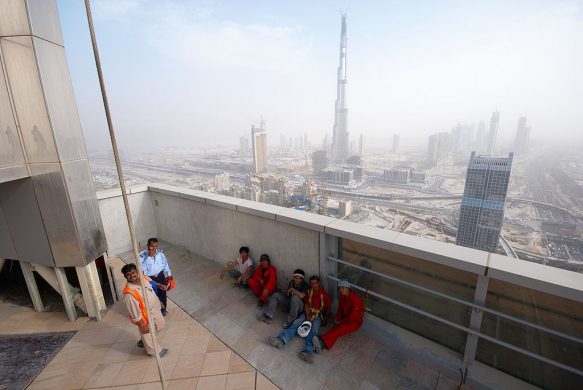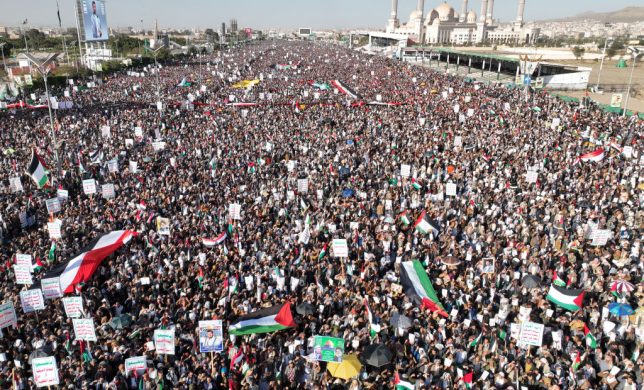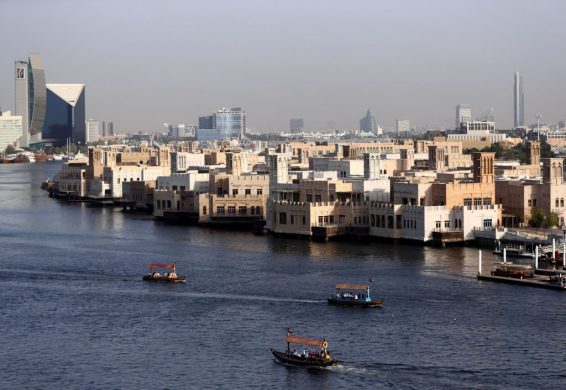GENEVA, 4 October 2016 (ILO): Anna Engblom, Chief Technical Adviser for the South Asia Labour Migration Governance Project, talked to ILO News about the main findings of the report.
What did you want to discover with this study?
In principle, labour migration should be an all-round benefit. Labour shortages are filled in the host economy, migrants benefit from higher paid work and their families and home countries receive greater income from remittances. In reality, however, many workers looking to travel overseas lose out due to the exploitative practice of private recruitment companies. And while there is plenty of anecdotal evidence about the impact of these abuses, the conversation around how much low-skilled migrants actually had to pay lacked verifiable data. This survey aimed to contribute to the generation of this data by using a methodology that would allow for comparisons across migration corridors.
What form did the survey take?
Well, we used a standardised questionnaire and survey methodology developed by the ILO and the World Bank under the Global Knowledge Partnership on Migration and Development (KNOMAD) project. Then we had it translated into Urdu and trained teams to deliver it in the field. We targeted migrants who had used a regular channel to find work abroad, had worked or were working in Saudi Arabia or in the United Arab Emirates and were back in Pakistan on holiday or between jobs. We were also interested in migrants who had worked or were working in low skilled occupations in the construction and agriculture sectors.
How did you gain access to migrant workers?
Actually, this was a big challenge. Knowing that the bulk of migrants come from just 20 districts, for the survey we selected six: Rawalpindi and Gujrat from northern Punjab and Gujranwala and Sialkot from central Punjab; and Mardan and Charsada from Khyber Pakhtunkhwa.
Once there, we listed potential interviewees from migrants visiting the Protector of Emigrants office and other sources, and we used them to find other people who might fit the profile. In statistics, this is called snowball sampling. Eventually we listed a total of 877 respondents and 620 were interviewed, with a minimum of 100 interviews per district.
There are prescribed amounts Pakistani workers should be paying for overseas recruitment – what are those rates?
In total, a migrant using an overseas work promoter should pay between PKR21,125 (US$201) and PKR31,524 (US$301) for a range of costs. It is more expensive for migrants who have secured employment directly, typically they pay between PKR45,575 (US$435) and PKR48,524 (US$463). These are government mandated rates.
So what do they actually pay?
Well, there is a lot of regional variation and variation to different destinations, but in short, the average investment made by the surveyed Pakistani workers to find a job and start work in Saudi Arabia or the United Arab Emirates was US$3,489. Saudi Arabia, because of a lower cost of living and slightly more amenable labour laws, is the more desired and, therefore, more expensive of the two.
The cheapest average cost for migrants was for those leaving Gujrat for work in the United Arab Emirates, at US$1,863 and the most expensive was for migrants from Mardan working in Saudi Arabia, at US$4,904.
But even the lowest rate is still well above the official rate, what is going on?
Well, we looked at the makeup of these costs, there are 13 components in all, and it became apparent that, especially for low skilled migrants, the visa fee was the major cost – representing up to 80 per cent of their total investment.
It is clear from our findings that a highly segmented and exploitive market for visas operates in Pakistan.
The basic mechanism is this: In short, the governments of the United Arab Emirates and Saudi Arabia give some employers – based on projected demands of workers – permission to bring in a specific number of workers for a given project. With this permission, the government also issues work permits and visas. The visa trading occurs if and when the employer decides to sell these permits and visas in an informal market. The buyer can be anyone who has access to workers and links with the employer or agent in a destination country. For example, a buyer can be a registered overseas employment promoter or an unregistered subagent in Pakistan or a Pakistani migrant worker in the country of destination (who buys it for a friend or a relative).
From there, it depends on how the migrant found the job. The average cost was highest (at $3,776) when the surveyed migrants obtained the job from an individual subagent/broker. A similar pattern was evident for both Saudi Arabia and the United Arab Emirates. The average cost for the migration journey was $3,435 when the job was obtained via a relative or friend. The average cost for the migration journey was relatively lower when the job source was a recruitment agency.
For low skilled migrant workers, these are significant sums of money, what can be done?
These are enormous sums that sometimes outweigh or significantly cut into the net benefit in travelling abroad for work in the first place. The average earnings these migrants reported that they made during their work abroad indicates that it took them, on average, almost eight months to break even – to recoup what they had paid to migrate for the job. By country, it took around nine months in Saudi Arabia and around six months in the United Arab Emirates to recoup their investment. This is a major challenge as many migrants cannot afford to terminate their contracts if they find that their work conditions are less favourable than what they signed up for before they left Pakistan. In some cases, this can result in conditions that are defined as bonded labour situations.
In terms of response, the conclusion that we have reached is that improving the system does not require more rules and regulations or a greater role of the government or stricter and higher penalties. What is needed is to put in place measures that will help the existing institutions function better. Strictly speaking, if the current laws were properly enforced, the cost of visas above the official cost should be next to zero. I might add that the ILO’s Private Employment Agencies Convention (No. 181) also stipulates that migrants should not have to cover any costs linked to migration.
Læs mere om – og download – rapporten The cost of migration: What low-skilled migrant workers from Pakistan pay to work in Saudi Arabia and the United Arab Emirates















